Sublimation vs Screen Printing: Which Offers the Best Prints??
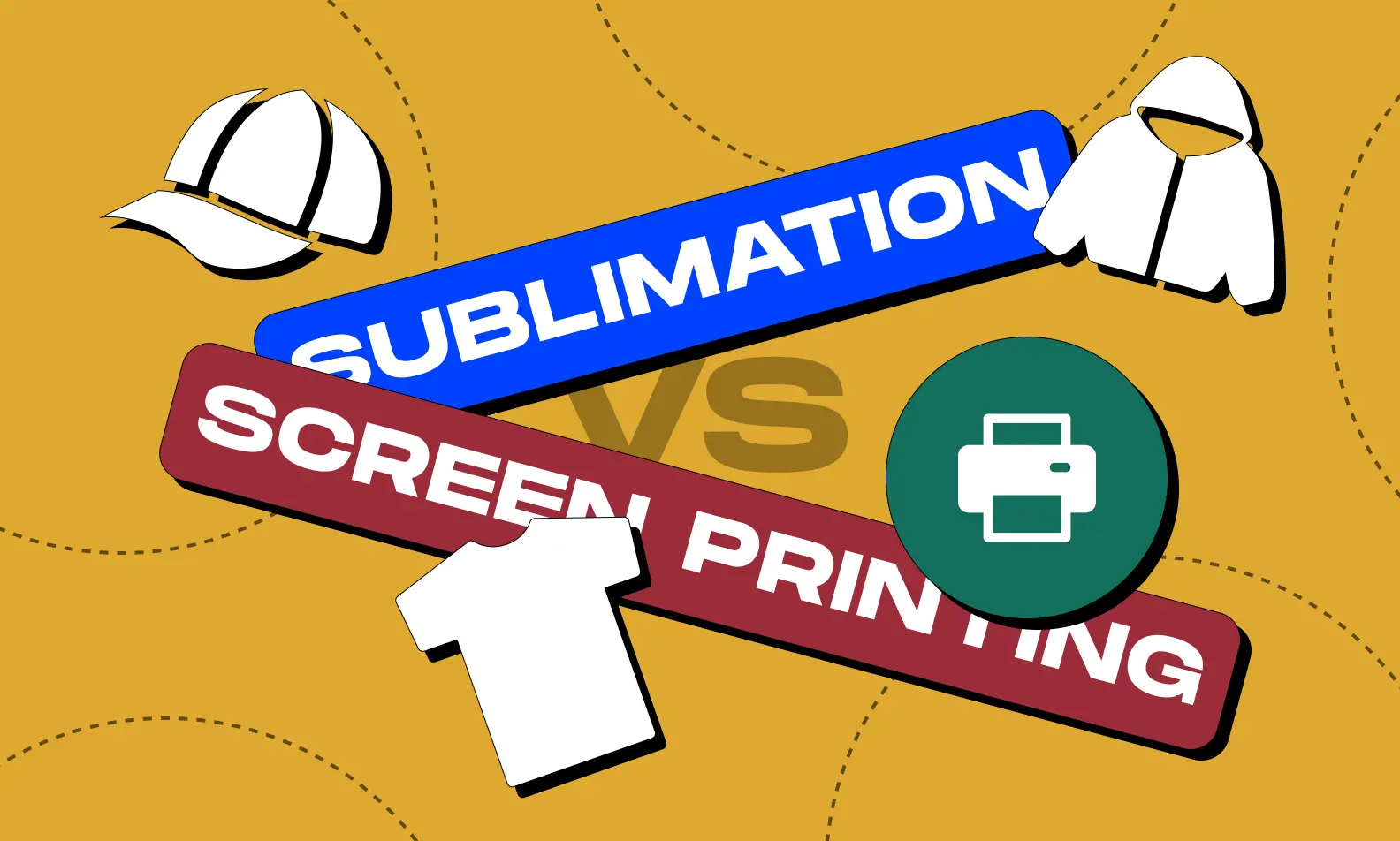
Understanding the different printing methods available is crucial for creators who aim to offer their fans high-quality merchandise that truly stands out.
Sublimation and screen printing are two of the most popular techniques for producing custom products that not only look professional but also resonate with your audience. These methods are widely used in the industry to create vibrant, durable designs on a variety of items, from apparel to accessories.
Whether you're looking to create eye-catching, full-color designs that wrap around your products or bold, opaque prints that pop on t-shirts and hoodies, choosing the right print technique can help elevate your merch line to new heights.
In this article, we'll help you understand the differences between dye sublimation and screen printing by providing an in-depth comparison of their benefits, limitations, and best use cases. We'll explore how each method works, the types of materials they are best suited for, and tips on selecting the right technique to ensure your merchandise not only meets but exceeds your fans' expectations.
How Does Sublimation Work?

Sublimation printing is a technique that uses heat and pressure to convert solid dye particles into gas, which then bonds with fabric or other materials, creating a vibrant, permanent design.
This process begins with printing the desired image onto sublimation paper using special sublimation ink. The paper is then placed on the item to be printed, and a heat press is applied at high temperatures, typically between 350-400 degrees Fahrenheit.
The heat then turns the ink into gas, penetrating the material's fibers, which creates a full-color, high-resolution image that feels like it's part of the material rather than sitting on top.
This method works best on polyester fabrics and polymer-coated items, producing durable, high-quality prints that won't fade or peel over time.
Products Suitable for Sublimation Printing:
- Polyester T-shirts
- Blankets
- Mugs
- Phone Cases
- Mouse Pads
- Custom Desk Mats
- Tote Bags
- Dog Leashes
- Coasters
- Puzzles
- Socks
How Does Screen Printing Work?
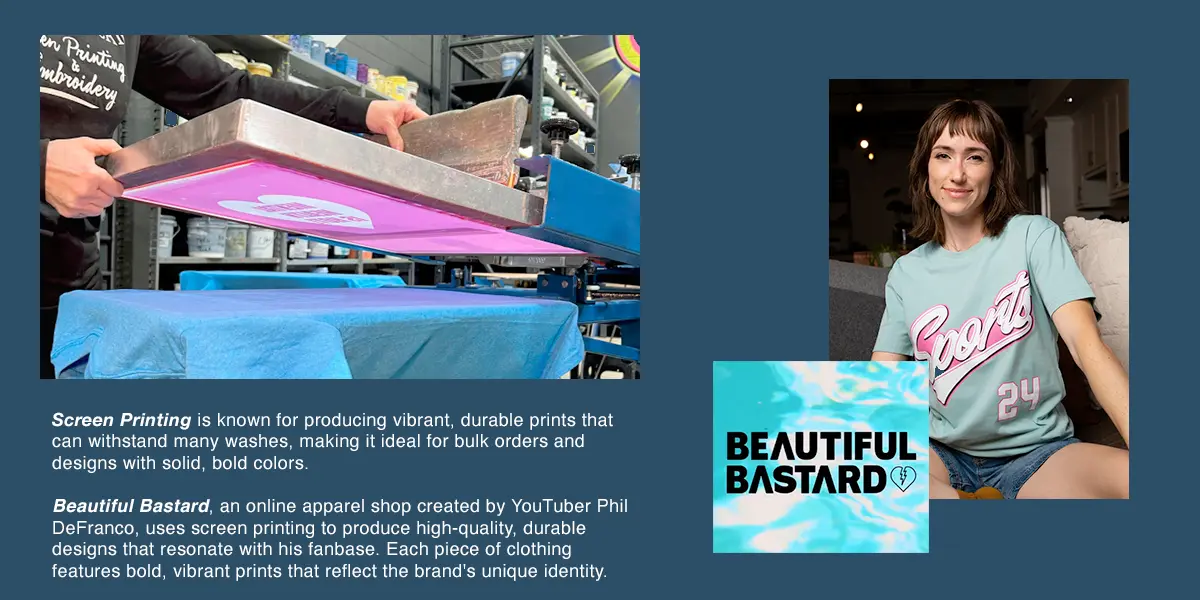
Screen printing is a traditional technique that involves pushing ink through a stenciled mesh screen to apply a design onto a surface, much like using a stencil to paint.
The process begins with creating a stencil of the desired design on a fine mesh screen, where areas not part of the design are blocked off.
Ink is then spread across the screen and forced through the open sections, imprinting the design onto the garment or item below. This process is repeated for each color in the design, making it particularly effective for bold, vibrant prints with thick ink layers.
Screen printing is versatile and works well on various fabrics, such as cotton, polyester, and blends, but it can be more time-consuming and costly for intricate, multi-colored designs.
Products Suitable for Screen Printing:
- T-shirts
- Hoodies
- Tote bags
- Posters
- Banners
- Sweatshirts
- Jackets
- Aprons
- Canvas prints
- Pillowcases
Sublimation Vs. Screen Printing 10 Key Differences
Understanding the key differences between sublimation and screen printing is crucial for making informed decisions about your printing projects.
1. Durability
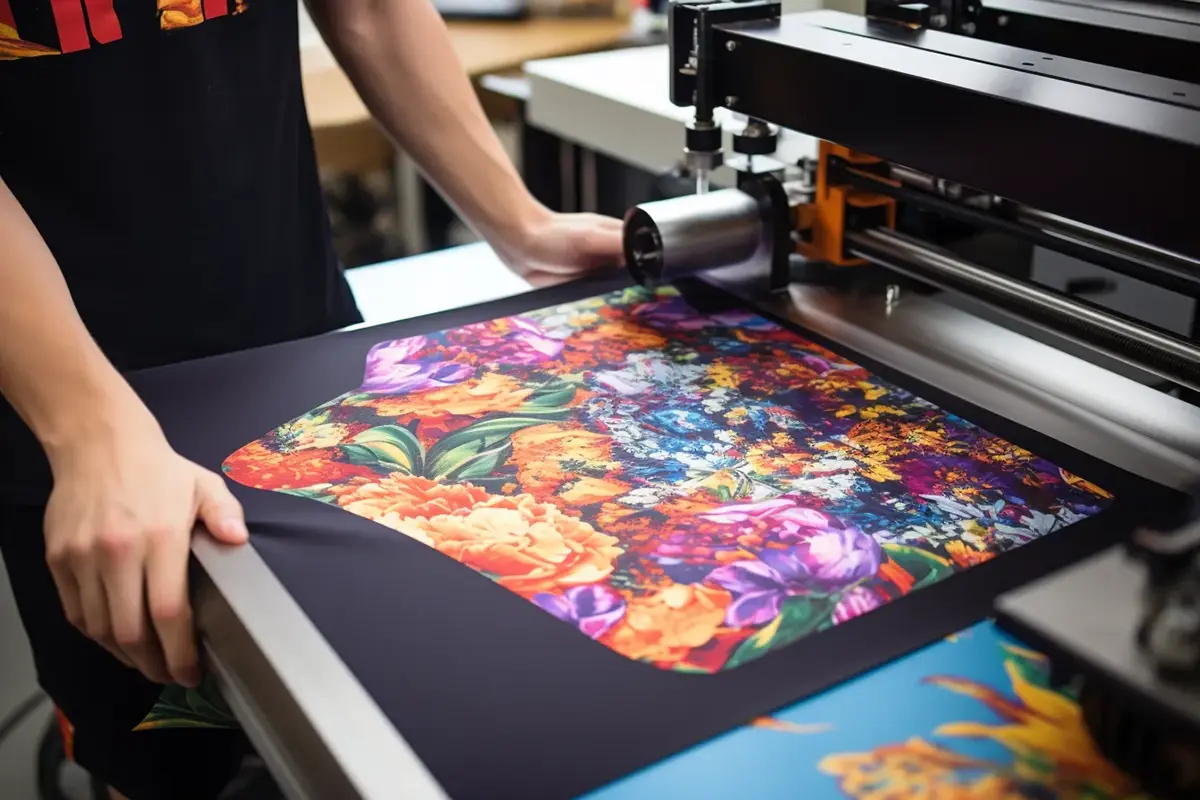
Sublimation printing offers exceptional durability for custom products. The ink integrates seamlessly into the fabric fibers through a heat press process, ensuring that printed designs remain vibrant and intact over time.
Unlike other methods, such as screen printing, which can be prone to issues like cracking, peeling, and fading—particularly in high-stress areas like collars and cuffs—sublimation printing is resistant to these problems. This is due to the unique use of transfer paper, which aids in embedding the dye sublimation ink directly into the material.
As a result, sublimation is ideal for items subjected to frequent use or washing, maintaining the integrity and appearance of your custom designs.
2. Image Quality
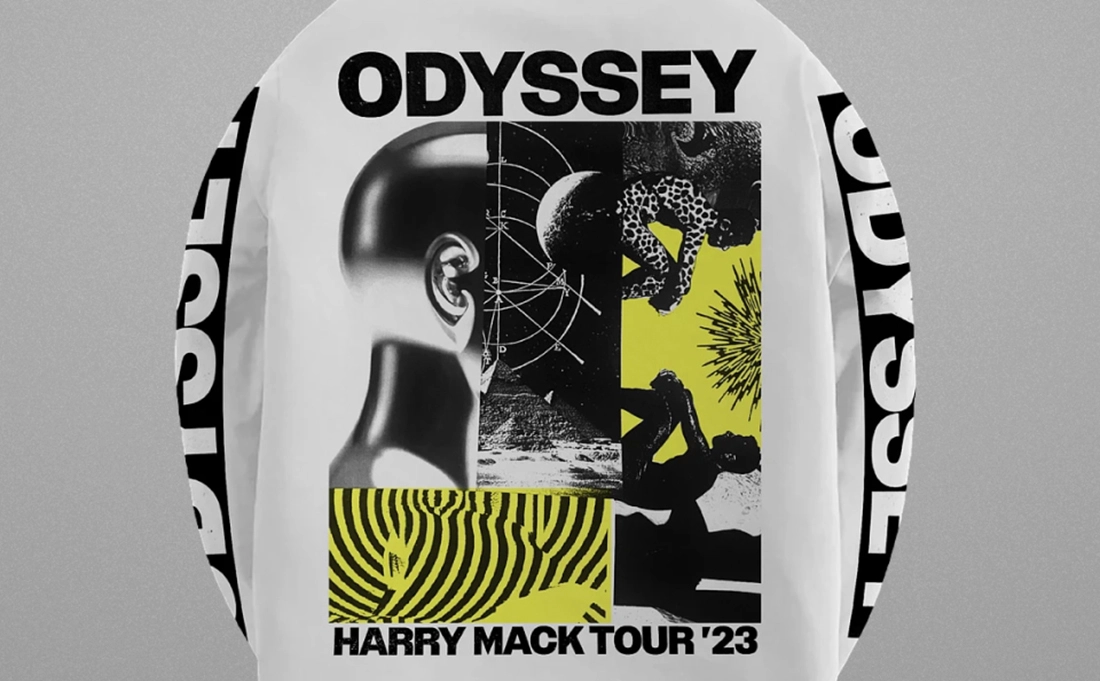
Sublimation is renowned for its ability to produce high-resolution, photo-realistic images with stunning color prints and seamless integration into the fabric. The dye sublimation process involves transferring ink from a stencil onto a mesh screen, which then embeds the color directly into the material, ensuring vibrant and detailed results.
Unlike screen printed designs, where the ink forms a thicker layer on top of the fabric, sublimation achieves superior image quality with better color blending and resolution. This results in crisp, sharp designs that maintain their vibrancy over time, making it an ideal choice for creating detailed and visually striking shirts that stand out with their exceptional clarity and color accuracy.
3. Cost-Effectiveness

Screen printing often involves lower initial setup costs compared to sublimation printing, making it an attractive option for smaller runs or simpler designs. However, the per-unit costs can become more expensive, especially for complex designs with multiple colors, as each color requires a separate stencil and mesh screen.
In contrast, sublimation printing, while requiring a higher upfront investment in specialized equipment such as a sublimation printer, heat press, and sublimation ink, can be more cost-effective for larger orders. Once the design is printed, it can be transferred to numerous items without additional setup costs, resulting in lower per-unit expenses for bulk production.
This makes sublimation printing a more economical choice for large-scale production, where the initial investment is offset by the reduced cost per item and the ability to produce highly detailed and vibrant color prints.
4. Production Time
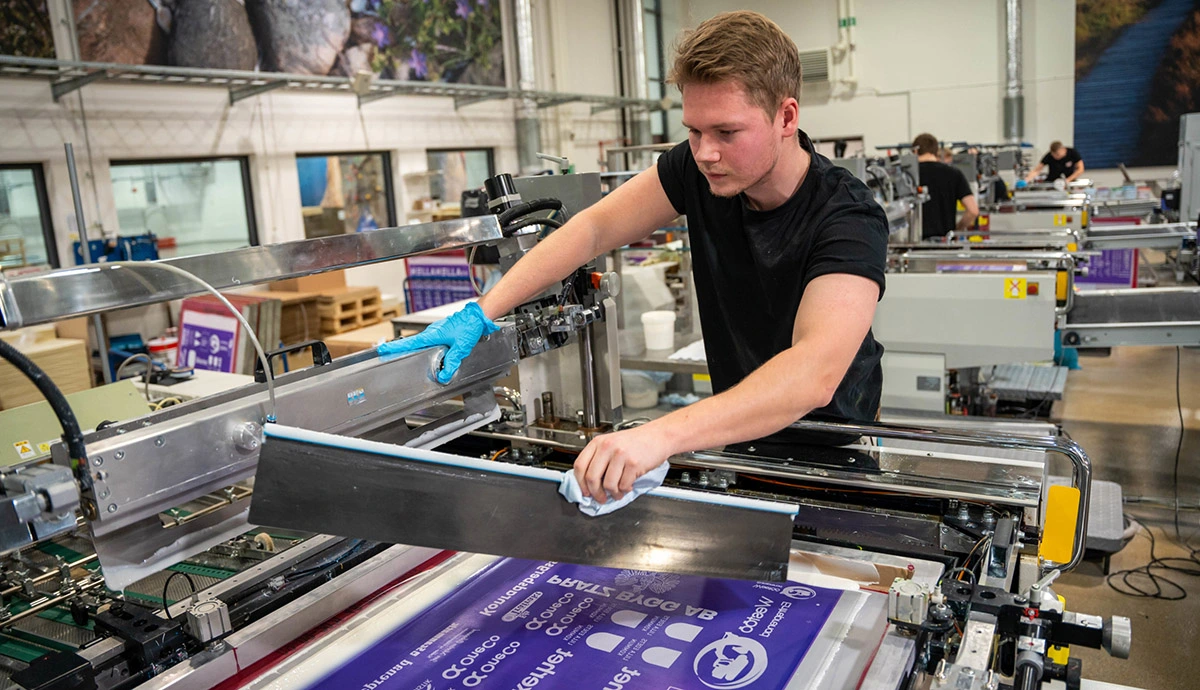
When it comes to production speed, sublimation printing often takes the lead, especially for small orders and straightforward designs. Once the design is finalized, the sublimation printer quickly outputs the design, which is then seamlessly transferred onto garments, making the process highly efficient.
This rapid turnaround is particularly beneficial for businesses needing quick delivery, as sublimation allows for faster production and fulfillment.
In contrast, screen printing, while effective for producing bold and vibrant designs on garments, is typically more time-consuming. Each color in a design requires a separate stencil and mesh screen, and multiple printing passes are necessary, which can extend the timeline, especially for bulk orders.
For projects under tight deadlines, sublimation printing’s streamlined process often emerges as the faster and more efficient choice.
5. Material Compatibility
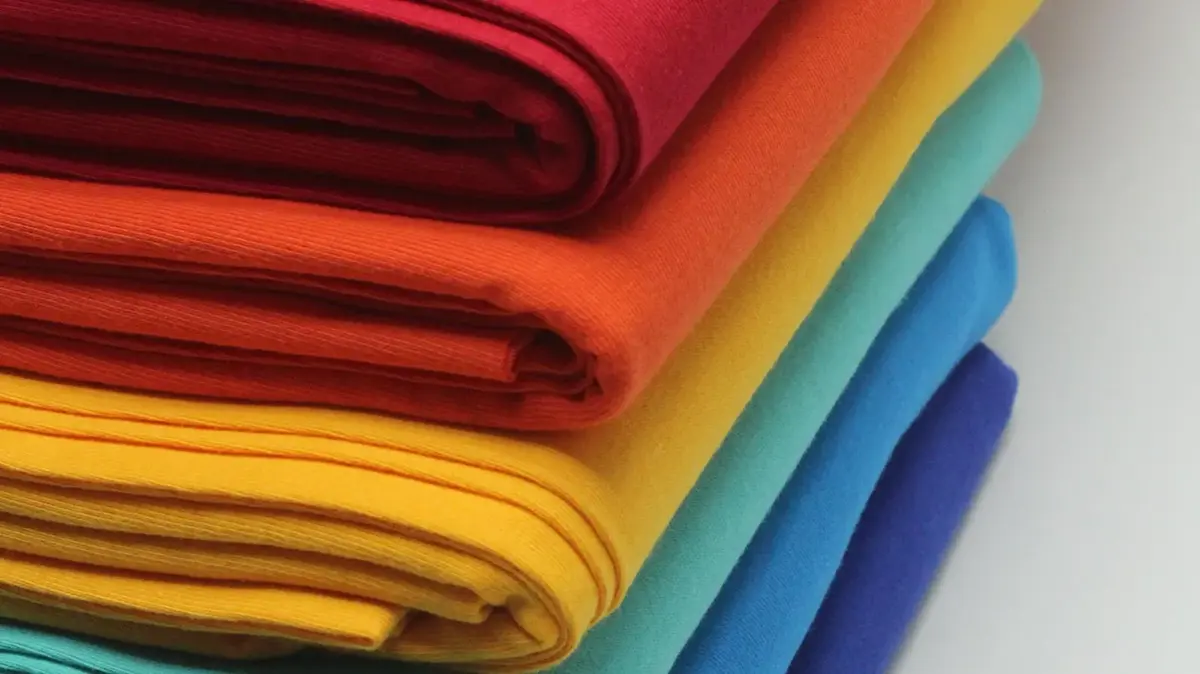
Sublimation shines when used with polyester-based fabrics, as the ink bonds directly with the fabric fibers, resulting in vibrant and long-lasting prints that are seamlessly integrated into the material.
This method is particularly ideal for creating high-quality garments and products where durability and color retention are paramount. However, sublimation's effectiveness is limited when applied to other materials, such as cotton, where the ink does not bond as effectively, leading to less vivid results.
On the other hand, screen printing offers greater versatility, accommodating a wider range of fabrics, including cotton, polyester, and various blends. This adaptability makes screen printing a popular choice for diverse garment production, allowing creators to produce bold and vibrant designs across different materials, ensuring consistency and quality across various products.
6. Design Complexity
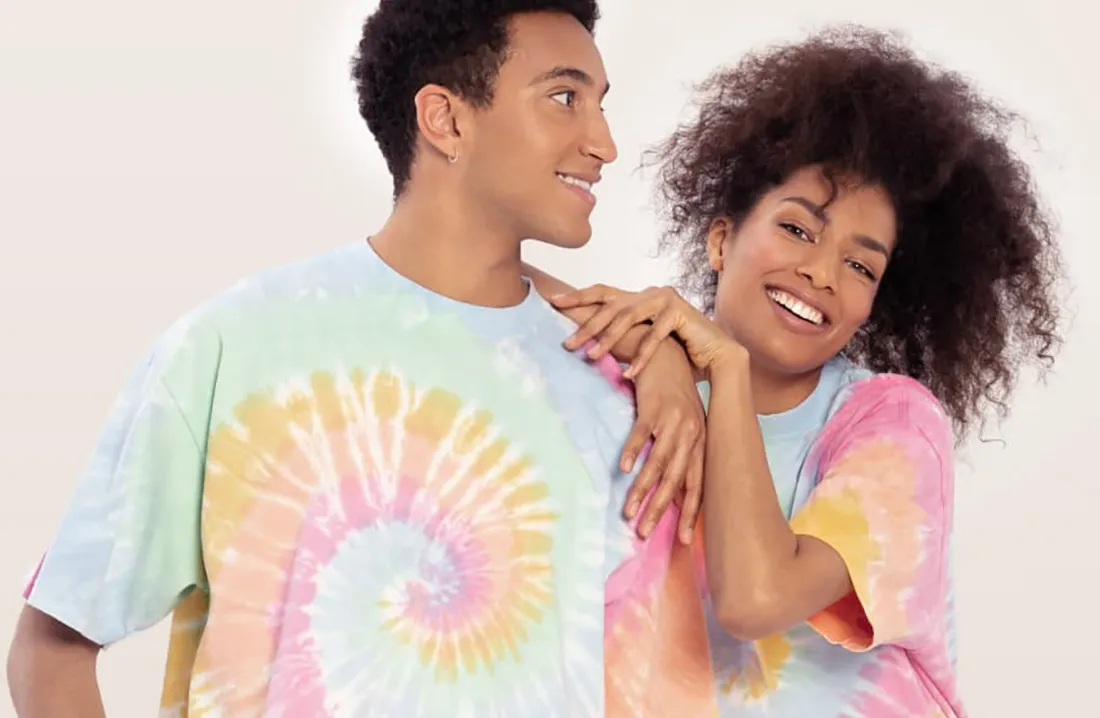
Sublimation printing is the best for handling intricate and complex designs, especially those featuring gradients, full-color images, and fine details. The process allows the entire design to be printed at once using sublimation ink and transfer paper, enabling smooth color transitions and a high level of detail that can be challenging to achieve with other methods.
This makes sublimation ideal for projects requiring detailed and vibrant printed designs, where every nuance of the image is faithfully reproduced on the fabric.
In contrast, screen printing is more suited for simpler designs with solid colors or large areas of uniform color. While screen printing can produce bold and striking screen printed designs, managing complex artwork with multiple colors can become both time-consuming and costly, as each color requires a separate stencil and screen. This limitation makes screen printing less efficient for highly detailed or multicolored designs but remains reliable for bold, straightforward graphics.
7. Environmental Impact
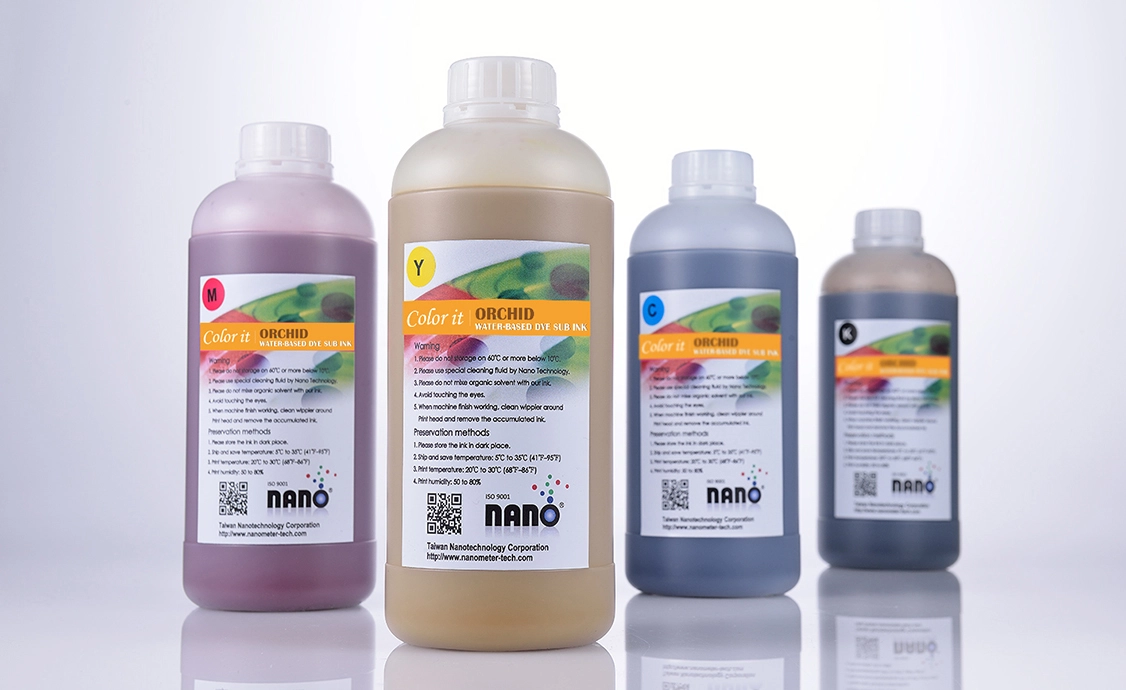
When evaluating environmental impact, sublimation printing tends to have a greener footprint due to its minimal waste production and the use of water-based inks, which are less harmful to the environment.
This process is more efficient, as the sublimation ink is directly infused into the fabric, eliminating the need for excess materials like transfer paper or chemical solvents.
On the other hand, traditional screen printing can be more wasteful, often requiring multiple screens and chemical-based inks that can contribute to environmental pollution. The screen printing process involves using screen mesh, emulsion, and various cleaning agents, which can lead to increased waste and chemical runoff.
However, recent advancements in screen printing technology have introduced more sustainable practices, such as eco-friendly inks and biodegradable materials, reducing its overall environmental impact.
Despite these improvements, sublimation printing still generally holds an edge in terms of environmental responsibility, especially for projects focused on minimizing ecological impact.
8. Wash and Wear Performance

For durability, longevity, and performance, sublimation printing stands out for its exceptional ability to produce vibrant, long-lasting designs that withstand repeated washes without fading, cracking, or peeling.
This process utilizes a sublimation printer and sublimation paper to transfer ink onto polymer-based fabrics through a heat process, resulting in sublimated designs that become an integral part of the garment's fibers. This embedded ink ensures that your vibrant color designs remain resistant to wear and tear, even after numerous washing cycles, making it an ideal choice for shirts and other apparel.
With screen printing, this process involves applying layers on layers of ink, such as plastisol ink, onto the surface of the fabric using a stencil and mesh screen, which can be more susceptible to deterioration if constantly thrown into the washer and dryer. This will cause your screen printed transfers to lose their initial luster and integrity, resulting in apparel that doesn't last long.
While modern advancements like digital printing and DTG (Direct to Garment) offer alternatives, sublimation print's superior printing work continues to be the preferred method for producing durable and long-lasting products.
9. Suitable Products
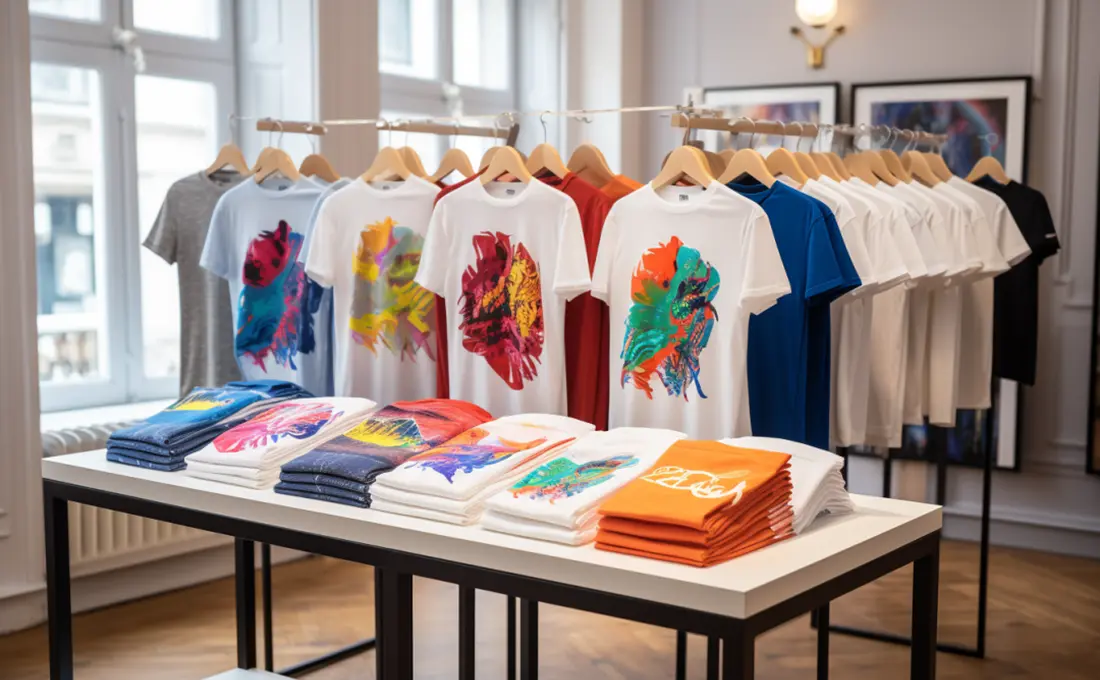
Screen printing is an excellent choice for creating bold, opaque prints on t-shirts, hoodies, bags, and other garments, where a durable and vivid design is required. This traditional printing method uses a stencil and mesh screen to layer plastisol ink onto the fabric, making it especially effective for large, solid-color designs.
Sublimation, on the hand, is ideal for vibrant, all-over prints and photo-realistic images on products made from polyester or polyester blends. This technique excels in producing fade-resistant, durable printed designs on items like polyester shirts, mugs, phone cases, and home décor. The heat press process ensures that the sublimated image becomes an integral part of the fabric or polymer-coated substrate, resulting in high-quality, long-lasting designs.
10. Best Use Cases

Screen printing excels in producing bold, opaque prints and is often the preferred choice for large production runs of the same design. It is well-suited for a diverse range of fabrics, including cotton and polyester, making it ideal for bulk orders of garments like t-shirts and hoodies. Screen printing offers cost-effectiveness for high-volume projects and is ideal for designs that use fewer colors and simpler patterns.
However, if you want to create high-quality, full color images with exceptional durability, then sublimation printing is the recommended method. Sublimation is particularly effective for products made from polyester or polyester blends, such as mugs, phone cases, and custom apparel. This printing method allows for intricate color designs and detailed, photo-realistic images, making it perfect for small to medium production runs. This method integrates ink into the fabric, ensuring that the prints remain vibrant and long-lasting.
By understanding these key differences, including the capabilities of each printing technique and their suitability for various materials, you can select the most effective method for achieving your project goals and desired outcomes.
Frequently Asked Questions
Which method is best for dark fabrics?
When it comes to printing on dark fabrics, screen printing typically stands out as the superior method due to its ability to deliver bold, opaque prints. Screen printing uses thick, opaque inks that lay a solid layer of color on top of the fabric, making it highly effective at covering darker base colors. This ensures that the printed designs are vivid and easily visible against the dark background.
Sublimation printing, on the other hand, faces limitations when used on dark fabrics. This method relies on dye sublimation, which involves transferring ink into the fabric fibers through a heat press. While sublimation produces excellent results on lighter fabrics, it does not perform as well on dark textiles.
Can I mix sublimation and screen printing on one product?
Mixing sublimation and screen printing on one product is technically possible but generally not recommended due to the distinct requirements and potential impact on overall quality. Each printing method has its own set of parameters and processes that can affect the final outcome.
Several issues may arise when attempting to combine both methods on a single product. For instance, the heat and pressure used in sublimation could potentially affect the screen-printed areas, causing them to crack or peel. Additionally, achieving precise registration where the two methods overlap can be challenging, leading to potential misalignment and quality inconsistencies.
Moreover, the different curing processes for each method could lead to complications. Sublimation requires heat to activate the dye, while screen printing inks may need different curing temperatures or methods, which could interfere with each other.
How do I care for sublimated or screen printed items?
To ensure that your sublimated and screen printed items retain their quality and appearance, it’s essential to follow specific care instructions for each method.
For sublimated items, such as apparel and accessories, wash them inside out in cold water with mild detergent, avoiding bleach and fabric softeners. This prevents discoloration and maintains the vibrancy of the print. Air drying is preferable to avoid heat damage.
For screen-printed items, turn them inside out and wash them in cold water with a gentle detergent, avoiding bleach and high temperatures. This helps preserve the print’s integrity and prevents cracking or peeling.
By adhering to these care guidelines, you can ensure that your products look amazing and last longer, keeping your designs sharp and vibrant.
Unleash Your Fourthwall Store's Potential with Sublimation and Screen Printing
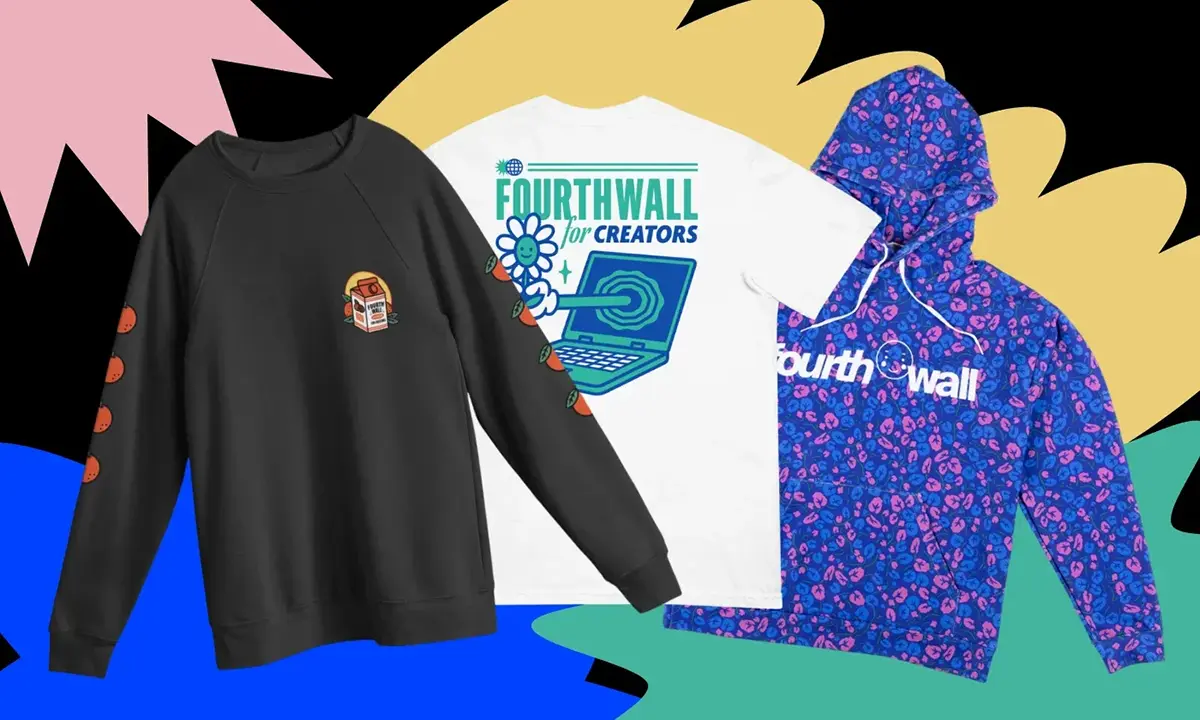
Fourthwall provides creators with an extensive catalog of customizable merchandise. With over 70 screen printed products like t-shirts, hoodies, and tote bags, and more than 120 sublimation products, including phone cases, mugs, and all-over print apparel, Fourthwall ensures that creators have a wide variety of high-quality options to sell to their fans.
Fourthwall's product rendering technology allows you to see photorealistic renders of each of your designs before they go live, ensuring that your products look exactly how you envision them. This, combined with Fourthwall’s easy-to-use platform and print on demand features, makes it simpler than ever to launch a store, manage orders, and connect with your audience—all while offering top-notch merchandise that reflects your brand's unique style.
So, if you're looking to create and sell high-quality merchandise to your fans, then sign up with Fourthwall today and take advantage of the platform's sublimation and screen printing features and elevate your brand with stunning, durable products that your audience will love.
















